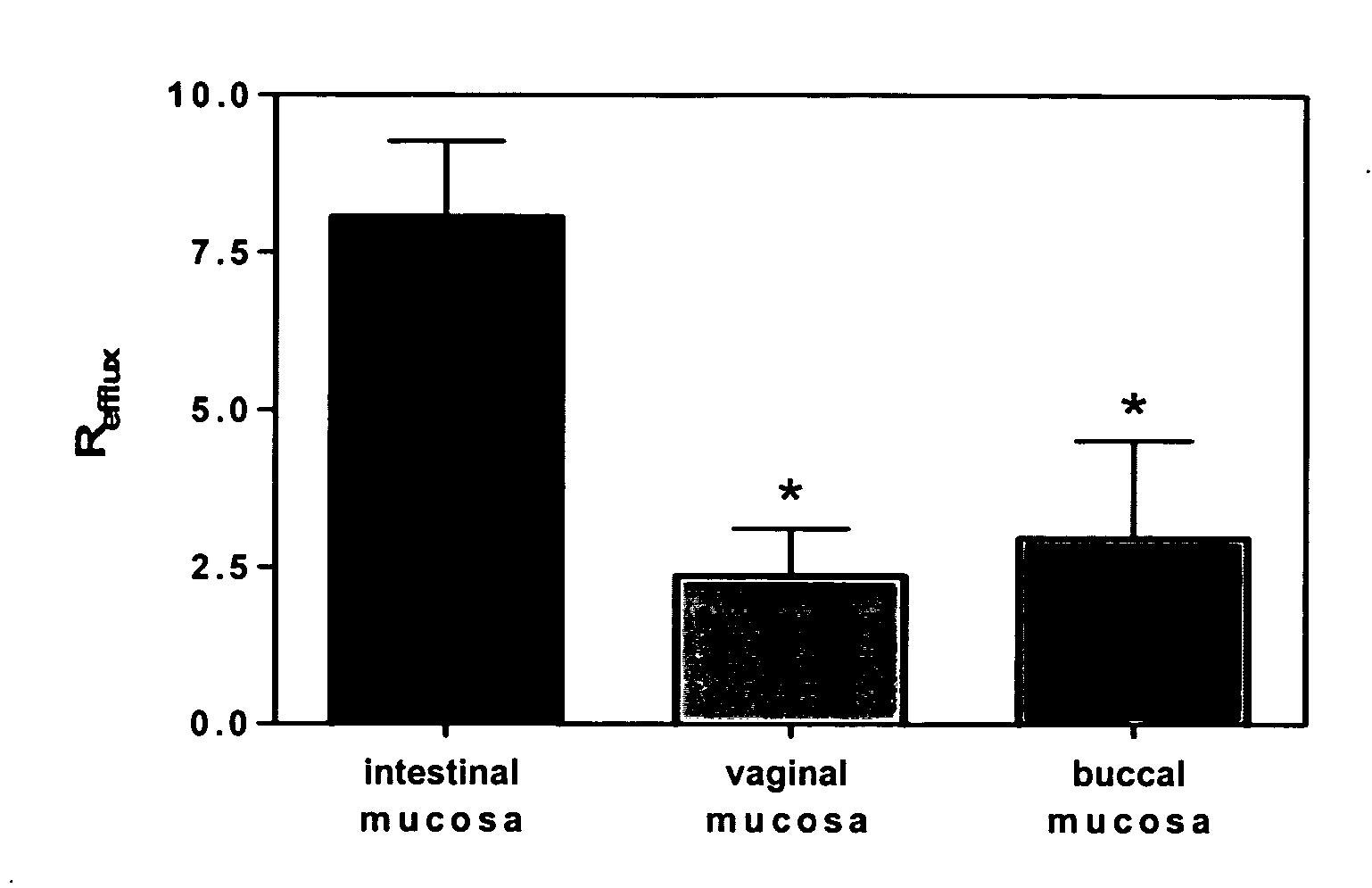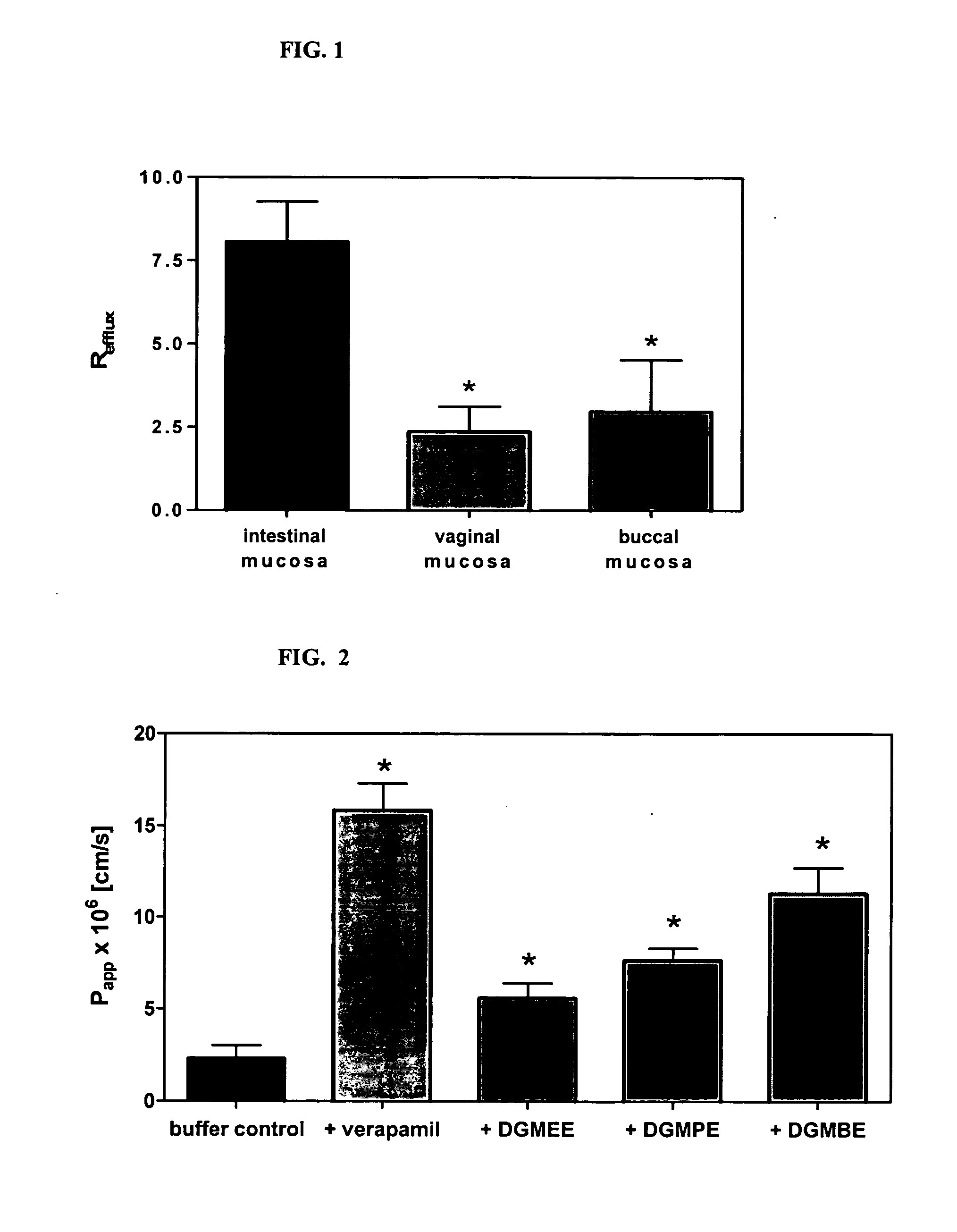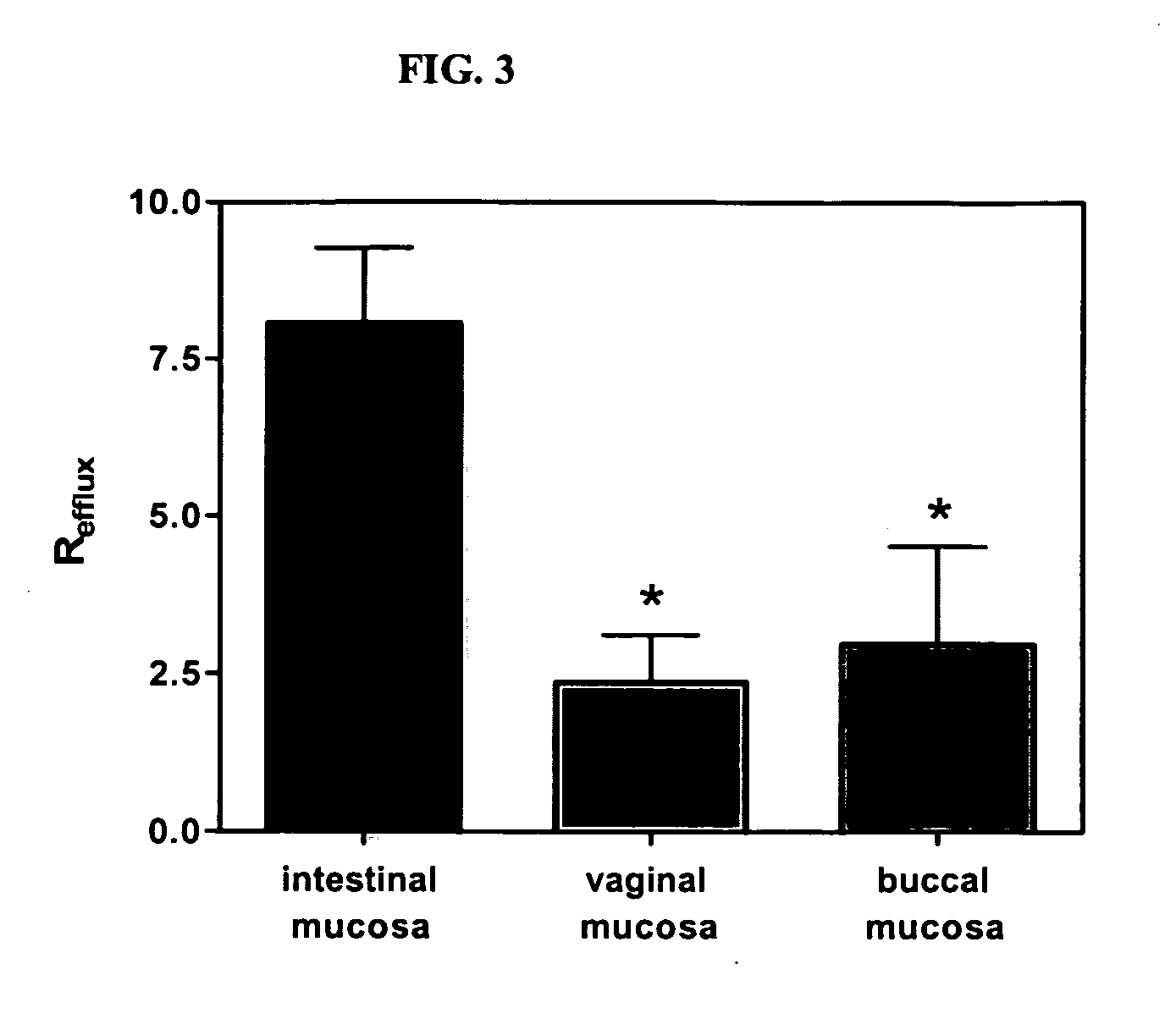Method for augmentation of intraepithelial and systemic exposure of therapeutic agents having substrate activity for cytochrome P450 enzymes and membrane efflux systems following vaginal and oral cavity administration
a technology of cytochrome p450 enzyme and therapeutic agent, which is applied in the field of vaginal or buccal administration of therapeutic agent, can solve the problems of high cost of these treatments, and the increase in the incidence of cancer and hiv/aids viral infections among women. , to achieve the effect of increasing the bioavailability and increasing the drug's solubility
- Summary
- Abstract
- Description
- Claims
- Application Information
AI Technical Summary
Benefits of technology
Problems solved by technology
Method used
Image
Examples
example 1
Determination of Drug Class
[0257] To improve the efficiency of drug development and the review process by recommending a strategy for identifying expendable clinical bioequivalence tests, Biopharmaceutical Classification System (BCS) guidance was developed by the Office of Pharmaceutical Sciences.
[0258] The rationale for this system was to recommend a class of immediate-release (IR) solid oral dosage forms for which bioequivalence may be assessed based on in vitro dissolution tests, to recommend methods for classification according to dosage form dissolution, along with the solubility and permeability characteristics of the drug substance.
[0259] According to the BCS, drug substances are classified as follows:
[0260] Class I—High Permeability, High Solubility
[0261] Class II—High Permeability, Low Solubility
[0262] Class III—Low Permeability, High Solubility
[0263] Class IV—Low Permeability, Low Solubility
[0264] A drug substance is considered highly soluble when the highest dose ...
example 2
Determination of Membrane Efflux Activity
[0267] This example describes experimental procedure that can be used for determination of differences in membrane efflux activity in the intestine, vagina or oral cavity mucosa.
[0268] Briefly, fresh mucosal samples are collected from female, white New Zealand rabbits, are separated from underlying connective tissue, and are mounted into modified Franz-type diffusion cells (5 mm diameter). Permeability studies from the apical to the basolateral as well as in the opposite direction are performed using continuous-flow perfusion chambers designed for mucosal tissue (Squier et al. J. Pharm. Sci., 86, 82-84 (1997)). 3H-Ritonavir (˜3 μCi / mL) dissolved in 1 mL of 0.01 M PBS, pH 7.4, is applied to the donor compartment, and the perfusate in the received compartment is collected into scintillation vials through 16 hrs. Radioactivity is determined by liquid scintillation counting using a Beckman LS 6500. Each transport experiment is performed in four...
example 3
Vaginal Paclitaxel Suppository
[0269] This example illustrates preparation of a vaginal suppository comprising paclitaxel.
[0270] To prepare 10 suppositories, 3.5 g of paclitaxel (Beijing Zhongshuo Pharmaceutical Technology Development Company, Ltd., Beijing, China) is dissolved in 11.5 mL of diethylene glycol monoethyl ether:isopropyl myristate:α-tocopherol (90:8:2, v / v) and supplemented with 115 mg of genistein. This drug-containing mixture is slowly added to 15.6 g of liquefied Suppocire® CM (Gattefossé, Paramus, N.J.) maintained at 50° C. Under vigorous stirring, 300 mg hydroxypropyl methylcellulose obtained as Methocel® K from Dow Chemical Company (Midland, Mich.) is added before the suspension is further cooled prior to packaging into PE / PVDC-coated PVC suppository sleeves.
[0271] The quantitative composition of vaginal paclitaxel suppositories is as follows: 350 mg of the anti-cancer agent paclitaxel (11.5%, w / w), 1560 mg of the lipophilic carrier Suppocire® CM (51.1%, w / w), ...
PUM
| Property | Measurement | Unit |
|---|---|---|
| diameter | aaaaa | aaaaa |
| diameter | aaaaa | aaaaa |
| time | aaaaa | aaaaa |
Abstract
Description
Claims
Application Information
 Login to View More
Login to View More - R&D
- Intellectual Property
- Life Sciences
- Materials
- Tech Scout
- Unparalleled Data Quality
- Higher Quality Content
- 60% Fewer Hallucinations
Browse by: Latest US Patents, China's latest patents, Technical Efficacy Thesaurus, Application Domain, Technology Topic, Popular Technical Reports.
© 2025 PatSnap. All rights reserved.Legal|Privacy policy|Modern Slavery Act Transparency Statement|Sitemap|About US| Contact US: help@patsnap.com



